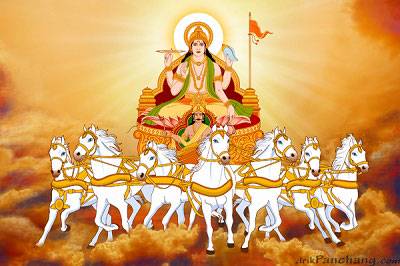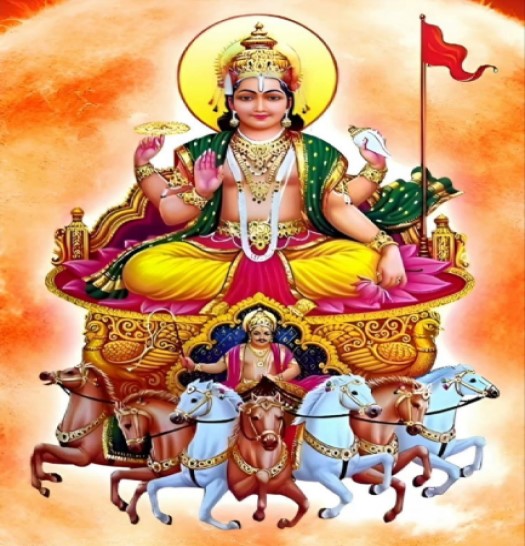SIGNIFICANCE MAKAR SANKRANTI
By: Swami Bhajanananda
In this article we bring you the message on the significance and observance of Makar Sankranti.
According to the lunar calendar, the sun moves from the tropic of Cancer, to the tropic of Capricorn, or from Dakshi-nayana to Uttarayana, in the month of Poush in mid-January. Makar Sankranti is one of the most auspicious days for the Hindus, and is celebrated in almost all parts of India in a myriad of religious and cultural forms.
Makar Sankranti is observed with great devotion, fervour and gaiety. On this auspicious occasion, thousands of pilgrims and devotees will go for bath in the Ganges at Ganga Sagar, and Prayag and pray to Surya Narayana (the Sun God).
The Sankranti season ends with Ratha Saptami, the seventh day of the bright half of Maagha when the Sun and his golden chariot are honoured. Makar Sankranti is the day when the glorious Sun-god Surya of the Hindus, begins its ascendancy, and entry into the Northern Hemisphere. It is also the day for which Bhishma Pitamaha kept waiting to leave his mortal coil as he lay on the bed of arrows provided by Arjuna.
Sun for the Hindus, stands for Pratyaksha-Brahman – the manifest God. Sun, transcends time, and also, the one who rotates the proverbial “Wheel of Time.” The famous Gayatri Mantra which is chanted everyday by every faithful Hindu, is directed to Sun God to bless them, with intelligence and wisdom. The Sun, does not only represent God, but also stands for an embodiment of knowledge and wisdom. Surya is the Hindu God of the Sun, brings light and warmth to the world.
Lord Krishna reveals in the Bhagavad Gita, that this manifested divinity was his first disciple, and we all know it to be indeed a worthy one too.
The Hindu worship to the Sun, is the most glorious and important. On Makar Sankranti day, the Sun begins its ascendancy, and journey into the Northern Hemisphere, thus it signifies an event wherein the gods seem to remind their children of the prayer:-
“Tamaso Ma Jyotir Gamaya”. O Lord, lead me from darkness to Light. May I go higher and higher–to more and more Light of knowledge and never to darkness.
Makar means Capricorn, and Sankranti is transition. There is a Sankranti every month when the Sun passes from one sign of the Zodiac to the next.
There are twelve signs of the Zodiac, and so there are twelve Sankrantis as well. Each of these has its own relative importance, but two of these are most important – the Mesh (Aries) and the Makar which is (Capricorn). And Sankranti which you know now is transition of the Sun from Sagittarius to Capricorn. During the Winter Solstice, in the Northern hemisphere, it is known as Makar Sankranti.
The saviour of his ancestors, Maharaj Bhagirath did great Tapasya to bring Ganga-Ji down to earth for the redemption of 60,000 sons of Maharaj Sagar, who were burnt to ashes by Sage Kapil near the present-day Ganga Sagar. It was on this day that Bhagirath finally did Tarpan with the water holy Ganges for his unfortunate ancestors and thereby liberated them from the curse.
The festival of Makar Sankranti also honours and pays reverence to Sarasvati-Goddess of knowledge. The famous Kumbh Mela is also held on Makar Sankranti every 12 years at one of the four holy locations namely Haridwar, Prayag which is also known as Prayag Raj, Ujjain and Nashik.
Makar Sankranti day is dedicated to Bhagvan Surya Deva or in simple English the deity Sun. It also refers to a specific solar day in the Hindu calendar. On this auspicious day, the sun enters the zodiac sign of Capricorn or Makar, which marks the end of winter months and the beginning of longer days. This is the beginning of the month of Magh.
Makar Sankranti also represents a time of illumination, peace, affluence and happiness. Remember friends, Tapasya does not empty one due to the penance, rather it fills you with divine grace, wisdom and devotion.
God bless.



